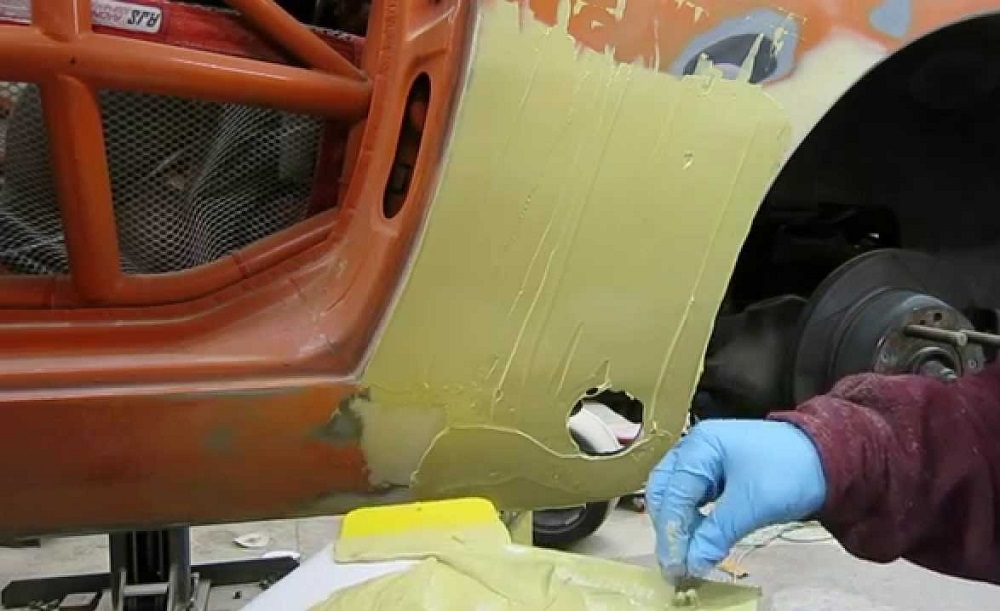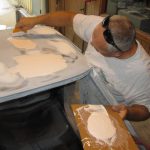Bondo, the go-to choice for many DIY enthusiasts and repair aficionados, offers remarkable versatility as a body filler. Yet, the question remains: Will Bondo stick to plastic? In this extensive guide, we’re going to unravel the intricacies of using Bondo on plastic surfaces. From comprehending the bonding dynamics to hands-on tips and techniques, this article aims to equip you with a thorough understanding to ensure the success of your plastic bonding endeavors.
The Dance Between Bondo and Plastic
To grasp the intricacies of the Bondo-plastic relationship, it’s crucial to understand the underlying dynamics. Bondo, celebrated for its exceptional adhesion properties, encounters unique challenges when faced with plastic surfaces. The compatibility of Bondo with plastic is a nuanced interplay influenced by factors such as the type of plastic and the specific Bondo product in use.
Decoding Plastic Diversity
Plastics come in a multitude of types, each with its distinct set of properties. Polyethylene, polypropylene, PVC, and ABS are commonplace, and each demands a tailored approach for effective bonding. Identifying the plastic type is akin to deciphering the key to a successful bond.
Unveiling the Secrets of Surface Preparation
The linchpin of a successful Bondo-plastic union lies in meticulous surface preparation. Let’s delve into a step-by-step guide that can make all the difference:
- Cleaning: Initiate the process by giving the plastic surface a thorough cleanse. Eliminate any dirt, grease, or contaminants using a mild detergent. A squeaky-clean surface lays the foundation for a strong bond.
- Sanding: Introduce a fine-grit sandpaper into the equation to create a rough texture on the plastic. This seemingly simple step serves a vital purpose—enhancing adhesion by providing an optimal surface for Bondo to grip.
- Priming: Elevate your preparation game by applying a plastic adhesion promoter or primer. This extra layer acts as a bridge, fortifying the bond between Bondo and plastic. Particularly useful with challenging plastics, priming is a step that should not be overlooked.
Choosing the Right Bondo Product: It Matters
Not all Bondo products are created equal, and selecting the right one can significantly impact the outcome of your project. Some Bondo products are explicitly formulated for plastic bonding. Opt for a product designed with plastic surfaces in mind to ensure compatibility and maximize the chances of a durable bond.
Unraveling the Art of Application
With the groundwork laid, let’s transition to the practical side of applying Bondo to plastic:
- Mixing Ratio Mastery: Pay heed to the manufacturer’s instructions for the correct mixing ratio. Deviating from this ratio can compromise the effectiveness of the bond. Precision matters.
- Application Artistry: Armed with a plastic spreader, apply the Bondo mixture evenly. Work in manageable sections, ensuring thorough coverage over the sanded and primed surface. A methodical approach pays dividends.
- Feathering Finesse: The art of feathering involves seamlessly blending the edges of the applied Bondo with the surrounding surface. This step is pivotal for achieving a smooth and natural finish that seamlessly integrates with the plastic substrate.
Navigating Challenges: A DIY Odyssey
Despite meticulous preparation, challenges may rear their heads. Let’s explore some common issues and their practical solutions:
- Cracking Conundrum: If the Bondo develops cracks after drying, it may signal insufficient mixing or an overly thick application. Sand the affected area, remix the Bondo, and reapply with a thinner layer. Patience is key.
- Adhesion Adventures: In the case of poor adhesion, revisit the surface preparation steps. Clean and sand the surface anew, and ensure you’re using the appropriate Bondo product tailored for the specific type of plastic you’re working with.
Expert Tips for Achieving Optimal Bonding: Mastering the Art of Bondo on Plastic
Embarking on a Bondo-plastic bonding journey requires not just knowledge but a mastery of the craft. Here are some expert tips to elevate your plastic bonding game:
1. Choose the Right Bondo Formula
Begin your journey with success by selecting a Bondo product specifically formulated for plastic bonding. Different formulations cater to various materials, and choosing the right one ensures compatibility and a more robust bond.
2. Temperature Matters
Pay attention to the ambient temperature during application. Ideal conditions enhance the curing process. Applying Bondo in extreme temperatures—too hot or too cold—can compromise its effectiveness. Aim for moderate temperatures for optimal results. (See Also: Can You Fiberglass Over Bare Metal? Tips and Tricks Explained)
3. Work in Small Sections
When applying Bondo to plastic, tackle the project in small, manageable sections. This approach ensures better control over the application process, allowing you to achieve an even coat and seamless integration with the plastic surface.
4. Master the Feathering Technique
Feathering is an art that demands finesse. Practice the technique of feathering the edges of the applied Bondo to achieve a seamless transition between the filler and the surrounding plastic. This not only enhances aesthetics but also contributes to a more durable bond.
5. Experiment with Adhesion Promoters
In challenging bonding scenarios, consider experimenting with different adhesion promoters. These products are designed to enhance the bond between Bondo and plastic surfaces. A bit of experimentation can lead to remarkable improvements in adhesion.
6. Prep Beyond the Surface
Go beyond the basics of surface cleaning and sanding. For enhanced adhesion, delve into advanced surface preparation techniques, such as chemical etching or abrasion, depending on the plastic type. Thorough preparation lays the groundwork for a successful bond.
7. Customize for Plastic Type
Understand the nuances of the plastic you’re working with. Different plastics require different approaches. Tailor your bonding process based on the specific characteristics of the plastic, ensuring a more harmonious and effective bond.
8. Invest in Quality Tools
The tools you use can significantly impact the bonding process. Invest in high-quality plastic spreaders, sandpaper, and application tools. Quality tools contribute to a smoother application and a more professional finish.
9. Address Imperfections Promptly
Inspect the bonded surface carefully after application. Address any imperfections, such as air bubbles or uneven surfaces, promptly. Sand and reapply Bondo as needed to achieve the desired finish.
10. Practice Patience During Drying
Rushing the drying process can lead to suboptimal results. Exercise patience during the drying phase, allowing Bondo to cure completely before proceeding with additional steps or finishing touches. (See Also: Can You Paint Rustoleum Over Ospho? A Comprehensive Guide)
Mastering the art of Bondo on plastic requires a combination of knowledge, technique, and a touch of finesse. By incorporating these expert tips into your process, you’ll be well on your way to achieving optimal bonding results on plastic surfaces. Happy bonding!
Frequently Asked Questions About Bondo and Plastic Bonding: Clearing the Confusion
Navigating the world of Bondo and plastic bonding can be a journey filled with questions. Here, we address some of the most frequently asked questions to provide clarity and guidance for your next project.
1. Can Bondo Be Used on All Types of Plastic?
Bondo can be used on various types of plastic, but success depends on the specific Bondo product and the type of plastic you’re working with. Some formulations are designed explicitly for plastic surfaces, ensuring better adhesion.
2. Do I Need to Sand the Plastic Before Applying Bondo?
Yes, sanding is a crucial step in the bonding process. Sanding creates a rough surface that improves the adhesion of Bondo. Use fine-grit sandpaper to prepare the plastic surface before applying the filler.
3. How Many Times Can I Apply Bondo to Achieve the Desired Result?
The number of applications depends on the project and the condition of the surface. It’s essential to apply Bondo in thin layers, addressing imperfections between applications. Patience and careful assessment during each step contribute to the desired result.
4. Is Priming Necessary for Bondo on Plastic Surfaces?
Priming is highly recommended for optimal results. Applying a plastic adhesion promoter or primer enhances the bond between Bondo and plastic. This extra step is particularly beneficial when working with challenging plastics.
5. Can Bondo Be Used for Structural Repairs on Plastic?
Bondo is primarily a surface filler and may not be suitable for structural repairs on plastic. For structural issues, consider alternative methods or materials specifically designed for load-bearing applications.
6. What Should I Do If Bondo Cracks After Drying?
Cracking may occur due to factors like insufficient mixing or overly thick application. In such cases, sand the affected area, remix the Bondo following the correct ratio, and reapply with a thinner layer for a more resilient finish.
7. Can I Paint Over Bondo on Plastic?
Yes, Bondo on plastic surfaces can be painted. After the Bondo has fully cured, sand the surface for a smooth finish before applying paint. Choose a paint suitable for both plastic and the specific Bondo product you’ve used. (See Also: Can You Clear Coat Plasti Dip? Learn the Best Techniques for a Durable Finish)
8. How Long Does It Take for Bondo to Dry on Plastic?
The drying time depends on factors like temperature and humidity. In ideal conditions, Bondo can dry within 20-30 minutes. However, allowing ample time for complete curing—typically 1-3 hours—is crucial for optimal results.
9. Can Bondo Be Used on Flexible Plastics?
While Bondo is versatile, its application on flexible plastics may pose challenges. Flexible plastics can flex and bend, potentially causing the Bondo to crack over time. Consider alternative flexible fillers for such applications.
10. Are There Alternatives to Bondo for Plastic Bonding?
Yes, there are alternative plastic fillers and adhesives designed specifically for bonding plastic surfaces. Explore options such as epoxy-based fillers or specialized plastic bonding agents based on the requirements of your project.
Navigating the world of Bondo and plastic bonding becomes smoother when armed with answers to common questions. Whether you’re a seasoned DIY enthusiast or a novice, these FAQs provide insights to ensure your Bondo-plastic endeavors are successful. Happy bonding!
The Grand Finale: A Bond Well Forged
In conclusion, the marriage of Bondo and plastic is not only possible but can yield results that endure. Armed with an understanding of plastic diversity, meticulous surface preparation, the right Bondo product, and adept application techniques, you can achieve a reliable and lasting bond on plastic surfaces. Remember, the devil—and success—lies in the details. Take your time, enjoy the process, and relish the satisfaction of a job well done. Happy bonding!



